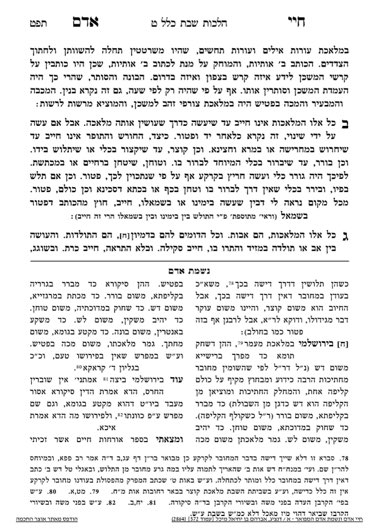We are beginning siman 2, where the Chayei Adam introduces some of the limitations on the melachos. Although the Chayei Adam does not mention it directly, we will touch on the concept of meleches machsheves asrah torah. The Gemara uses this phrase to teach us that certain actions will not be considered melacha deoraysa, because it is lacking meleches machsheves.
The precise translation of meleches machsheves is not entirely clear, but the poskim understand there are three components to defining it.
- One component is that it refers to chashivus; meaning, the melacha needs to accomplish something significant in order to be assur on a Torah level.
- Another component is that the melacha must be performed with the proper intent in order for it to be assur on a Torah level.
- The third component is that the work in the mishkan is described by the Torah as lachshov machashavos, that the work was sophisticated, almost professional-level work. We can conclude from this pasuk that only melacha which is skillful will be assur on a Torah level on Shabbos. This level of work is similar to the skillful acts of the artisans of the mishkan.
- that it accomplishes something of significance,
- that it is performed with proper intent,
- and that it is done skillfully.



